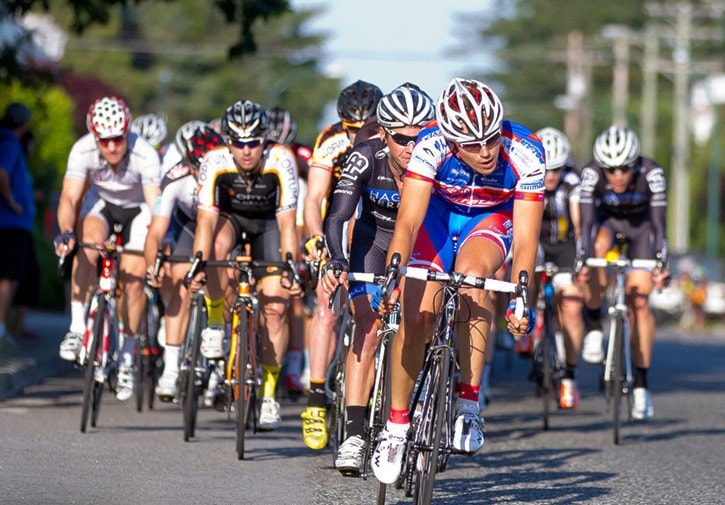If spectators happen to see a helicopter hovering over uptown White Rock Saturday during the Tour de White Rock criterium, don’t be alarmed.
It’s neither a medical emergency nor police searching for anyone from above, but rather Victoria researcher Hugh Trenchard studying the complex systems and patterns of cycling’s peloton.
A peloton refers to the group of cyclists riding closely together – often with wheels mere inches apart – during a race.
Trenchard, 44, is a former competitive cyclist – even competing in the Tour de White Rock as recently as four years ago – and began studying “complex systems” merely as a hobby in the early 2000s.
“I’d just been reading about complex systems, and patterns and areas of physics, and I just applied it to something I knew about, which was cycling,” he said.
“I’m interested in collection behaviour as it occurs in different forms.”
The field of complex systems is, as the name would suggest, complex. But boiled down, the study of it aims to see how parts of a system affect the collective behaviour of a group.
There are, Trenchard points out, systems and patterns in everything from herds of animals, flocks of birds, even economics.
And, of course, cycling.
On Saturday afternoon, Trenchard, along with University of Victoria computer science student Ashlin Richardson, will get a bird’s-eye view of peloton dynamics during the criterium. They’ll be filming from above and also taking notes for a research paper Trenchard hopes to publish.
In recent years, he has had one paper published and has spoken at a few conferences dealing with complex systems.
“When you’re at street level watching, or if you’re in the race, you can’t really see much of the peloton and what’s really going on – you basically just see your immediate neighbours,” Trenchard explained. “I’m interested to see the different forms, different shapes, that the peloton will take at different phases (of the race).”
Generally speaking, a larger, denser peloton will result in slower speeds for the cyclists, while less-dense groups are able to gain more speed and move more freely.
There are essentially three goals for the individual riding in the peloton, Trenchard said: avoid a collision, save energy by drafting your fellow riders and, in a competitive race, shoot for the front.
In Saturday’s criterium, he expects to see a number of different patterns emerge, as riders race a tight one-kilometre course that – in previous years – has had its fair share of crashes, as cyclists get a little too close together.
The starting gun will go off for the criterium beginning at 4 p.m. with the men’s category 3 and 4 race, and will be followed by the women’s pro race at 5 p.m. and the men’s pro division at 6 p.m.
